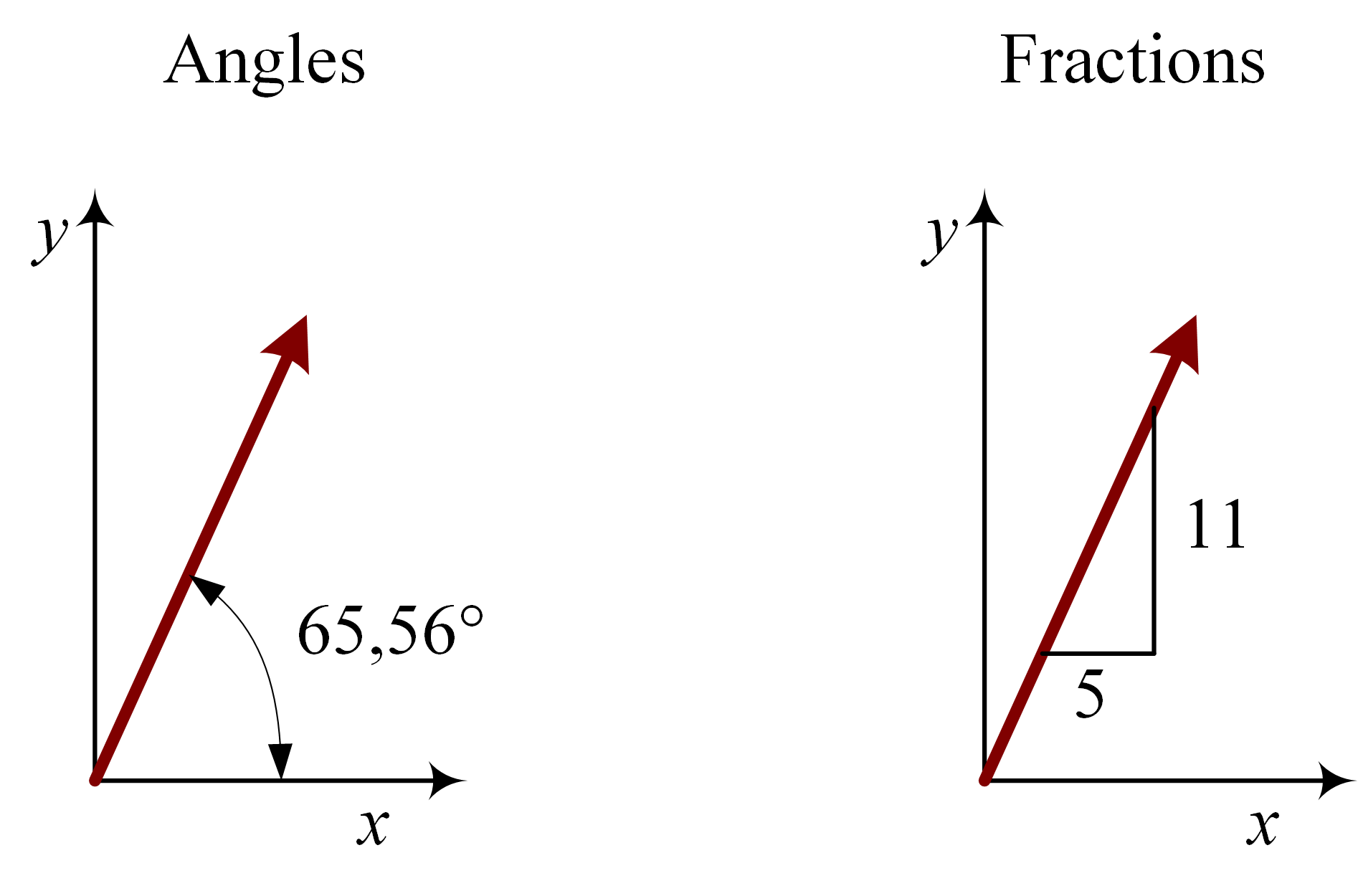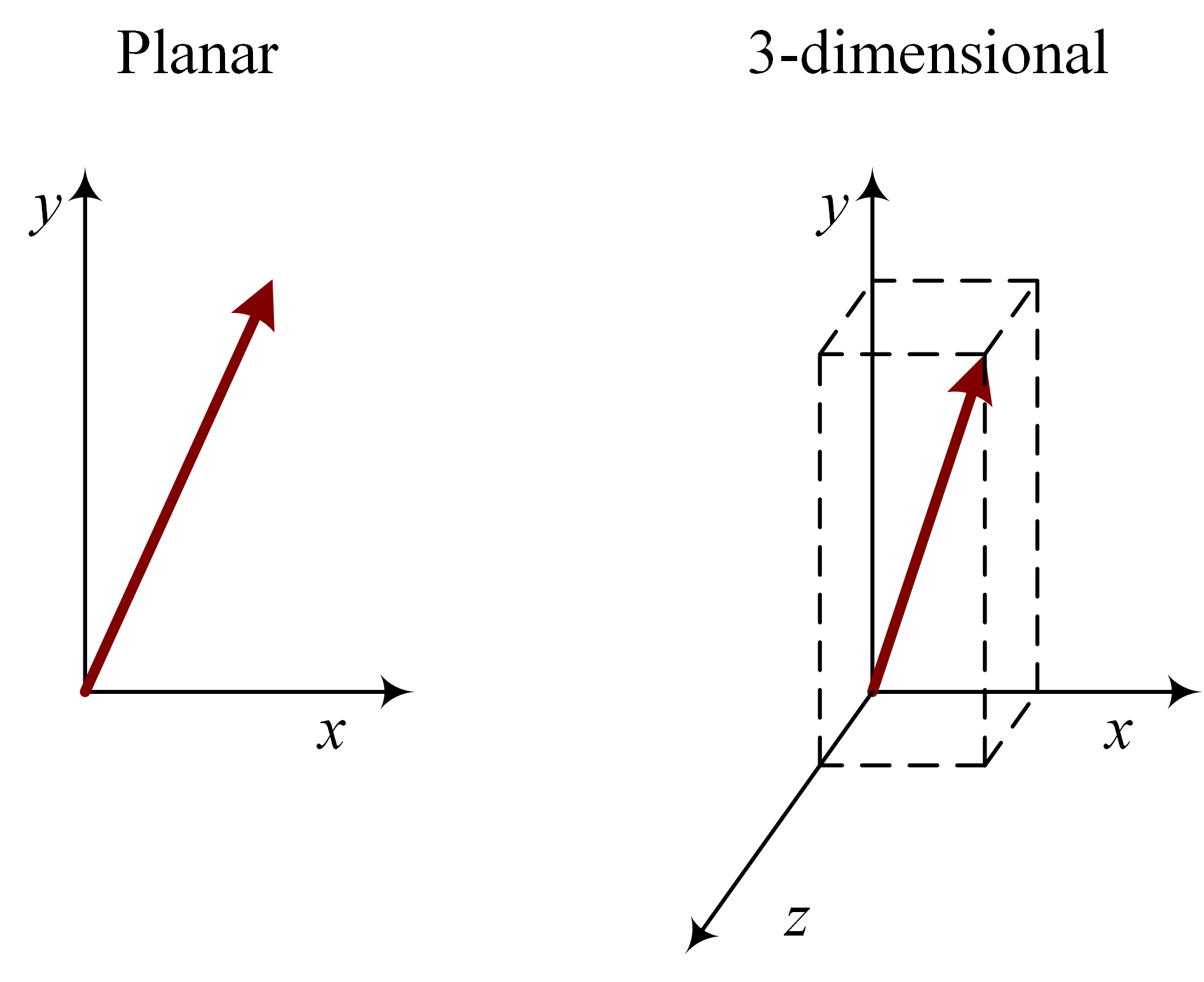Resolution of forces#
This subject allows you to resolve forces in both analytical and grapical manner.
Theory#
Forces can be resolved both analytically and graphically. The graphical approach can be a quick check for the analytical solution and allows the use of trigonometry, but becomes complicated in 3-dimensional space.
Directions of forces can be described by angles or with fractions as shown in angles_vs_fractions. Using fractions eases calculations when the root of the sum of the squared components is an integer.

Direction of force described by angles or with fractions#
The resolution of forces works both for planar forces (at least one of \(R_x\), \(R_y\) or \(R_z\) equals \(0\)), and forces in 3-dimensional space. An example of both of these forces is shown in planar_vs_3d. In statics, mostly planar structures are considered, but the procedure of composing and resolving force are identical.

Planar force vs 3-dimensional force#
Resolution of forces analytically#
Read chapter 2.1.3 for planar forces and 2.2.1 for forces in 3-dimensional space of the book Engineering Mechanics Volume 1 [Hartsuijker and Welleman, 2006].
Resolution of forces graphically#
Read chapter 2.1.4 of the book Engineering Mechanics Volume 1 [Hartsuijker and Welleman, 2006].
Practice material#
Exercises 2.9 - 2.32 in chapter 2.4 of the book Engineering Mechanics Volume 1 [Hartsuijker and Welleman, 2006]. Answers are available on this website.
